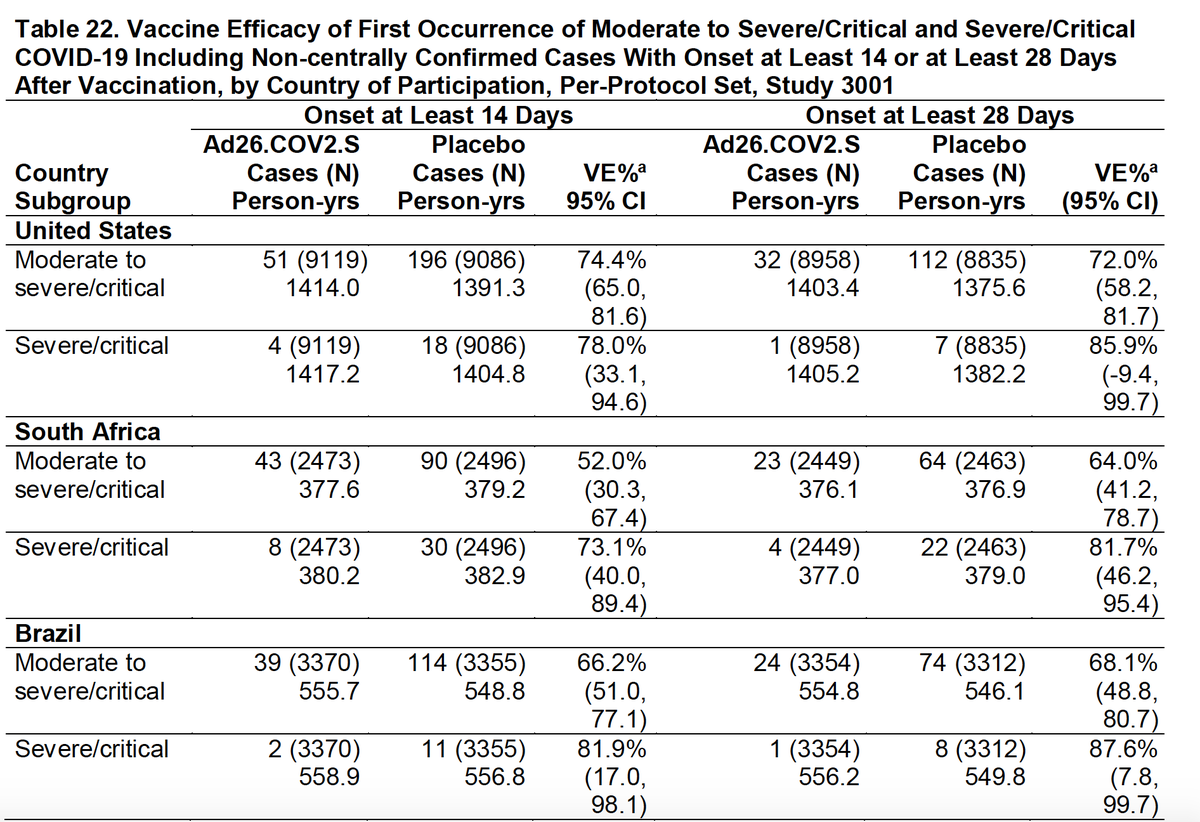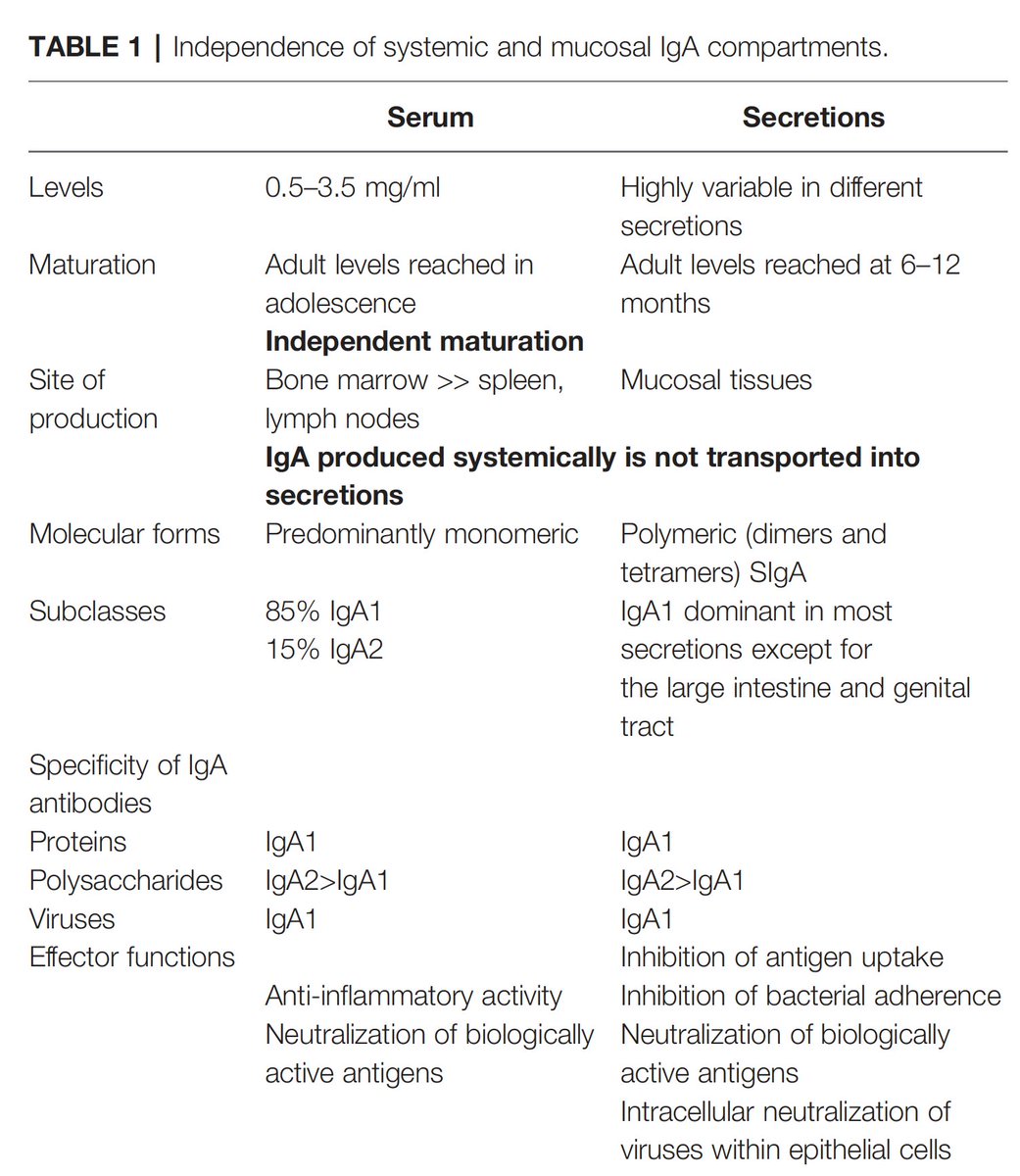
The @JNJNews vaccine FDA briefing documents are out, so we now can see how well this single adenovirus vector vaccine dose works
fda.gov/media/146217/d…
1. It is efficacious, overall 66%, but not as high as the mRNA vaccines (even in US with D614G strain).
fda.gov/media/146217/d…
1. It is efficacious, overall 66%, but not as high as the mRNA vaccines (even in US with D614G strain).

2. While 85% efficacy was seen for severe infections, there was some falloff in participants > 60 yrs of age 

3. A look at asymptomatic infections (carrier state) suggests the efficacy for reducing that is similar to overall efficacy 

6. More on deaths or hospitalizations (post hoc analysis)
All 7 covid deaths in placebo arm, but hospitalizations did occur in vaccine arm before 28 days, thereafter were all prevented

All 7 covid deaths in placebo arm, but hospitalizations did occur in vaccine arm before 28 days, thereafter were all prevented


7. Overall solid evidence of safety, 1 Guillian-Barre, unresolved, a couple of facial paralysis events resolving 

• • •
Missing some Tweet in this thread? You can try to
force a refresh












